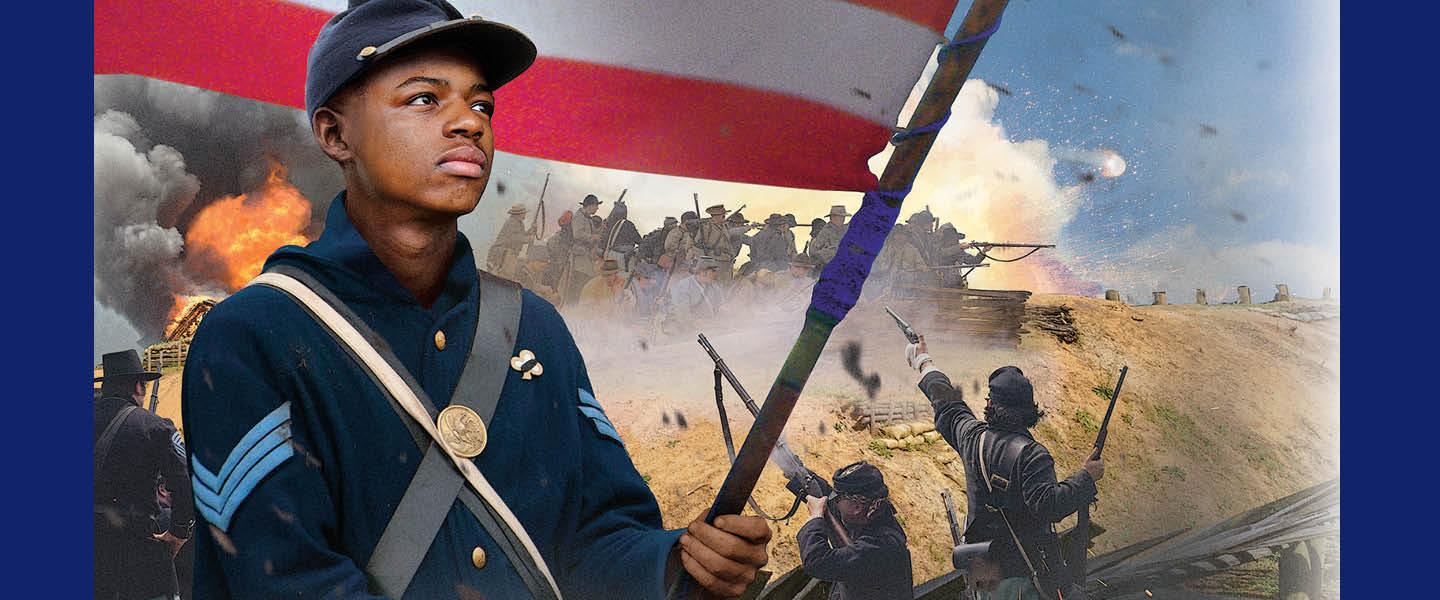American history has never seen another war like it. The Civil War (1861-65)—the bloody conflict between the predominately Northern states of the Union and the Southern states of the Confederacy—pitted countryman against countryman, even brother against brother. But it wasn’t just adults on the battlefield. Many of the soldiers were teenagers.
In their book Of Age: Boy Soldiers and Military Power in the Civil War Era, historians Frances M. Clarke and Rebecca Jo Plant estimate that more than 200,000 Americans under the age of 18 served for the Union—comprising 10 percent of all Union troops. About the same proportion made up Confederate forces. The official minimum age to enlist in the Union Army was 18, but many younger people—some as young as 10—lied about their birthdays to fight. The Confederate Army had no minimum age requirement.
Their reasons for enlisting varied: Many teens did so because they believed in the cause; others joined out of a desire for adventure or to earn wages to send back home. But no matter their motives, says Plant, military leaders “viewed them as indispensable.”
Boys weren’t the only ones involved in the war effort. Many girls aided the cause too, taking over duties at home and on farms. Some even disguised themselves as men to fight. And for the many Black teenagers who took up arms, the war carried the greatest stakes. For them, a Union victory would mean freedom.
These are the stories of five teens who played important roles in the Civil War.
American history has never seen another war like it. The Civil War (1861-65) was the bloody conflict between the predominately Northern states of the Union and the Southern states of the Confederacy. The conflict made countryman fight against countryman, and even in some cases brother against brother. But it wasn’t just adults on the battlefield. Many of the soldiers were teenagers.
In their book Of Age: Boy Soldiers and Military Power in the Civil War Era, historians Frances M. Clarke and Rebecca Jo Plant estimate that more than 200,000 Americans under the age of 18 served for the Union. Teens made up 10 percent of all Union troops. About the same proportion made up Confederate fighters. The official minimum age to enlist in the Union Army was 18. Many younger people—some as young as 10—lied about their birthdays to fight. The Confederate Army had no minimum age requirement.
Teens had many different reasons for joining the fight. Many did so because they believed in the cause. Others wanted adventure or pay to send back home. But no matter their motives, says Plant, military leaders “viewed them as indispensable.”
Boys weren’t the only ones involved in the war effort. Many girls also helped, taking over duties at home and on farms. Some even disguised themselves as men to fight. For the many Black teenagers who chose to fight, the war carried even greater stakes because a Union victory would mean freedom.
These are the stories of five teens who played important roles in the Civil War.

